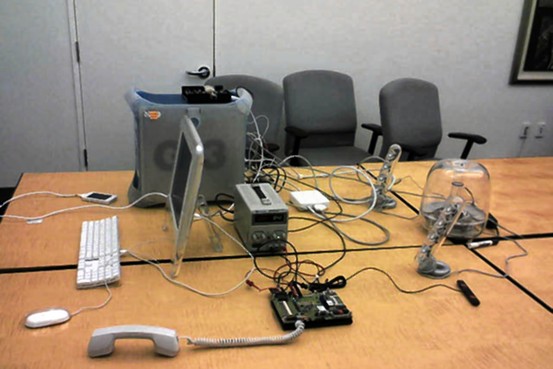
Apple and Samsung are set to begin a new patent infringement case next Monday, only a few weeks after a US judge ordered Samsung to pay $929.8 million to Apple. The stakes for this patent case could be even higher, as it involves more recent devices sold at much higher volumes.
The case involves five specific patents that Apple says Samsung has violated, including one for the now ubiquitous ‘slide to unlock’ feature. Unsurprisingly, the listed inventor on that patent, current Apple engineer Greg Christie was made available to speak with the Wall Street Journal about the innovation which spurred the development of the original iPhone (Mr. Christie has never previously spoken publicly on this matter).
Legal maneuvering aside, the interview is worth reading to clean new insights you might not know about the secret Apple project codenamed ‘purple’. One such interesting tidbid: Apple devised a system to test early iPhone software by tethering a plastic touch-screen device to an outdated Mac G3 to simulate the slower speeds of the original iPhone’s hardware (see photo above).
Mr. Christie also gives an interesting glimpse into the role Steve Jobs played in final design decisions:
In the following six months, before the iPhone went on sale in June 2007, Mr. Christie’s team made other changes. At Mr. Jobs’s urging, they eliminated a split-screen view for email with information about the sender on one side and the message on the other. “Steve thought it was foolish to do a split screen on such a small display,” Mr. Christie said.
Good call, Steve. Let us know if you learned anything new from the article, or if it’s all old hat by now.
Update: a previous version of this post referred to the patented feature as ‘swipe to unlock’.
[source]WSJ[/source]
MobileSyrup may earn a commission from purchases made via our links, which helps fund the journalism we provide free on our website. These links do not influence our editorial content. Support us here.


